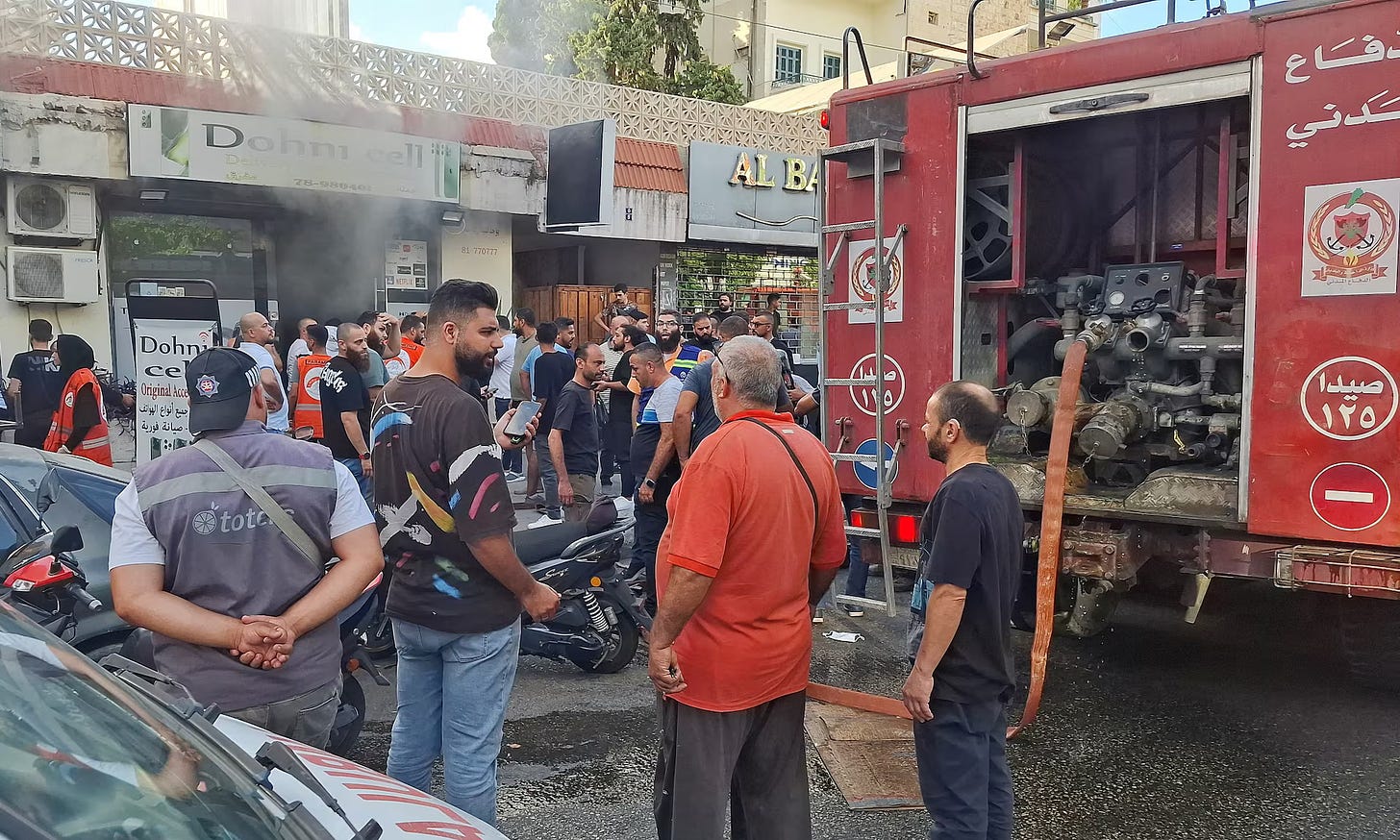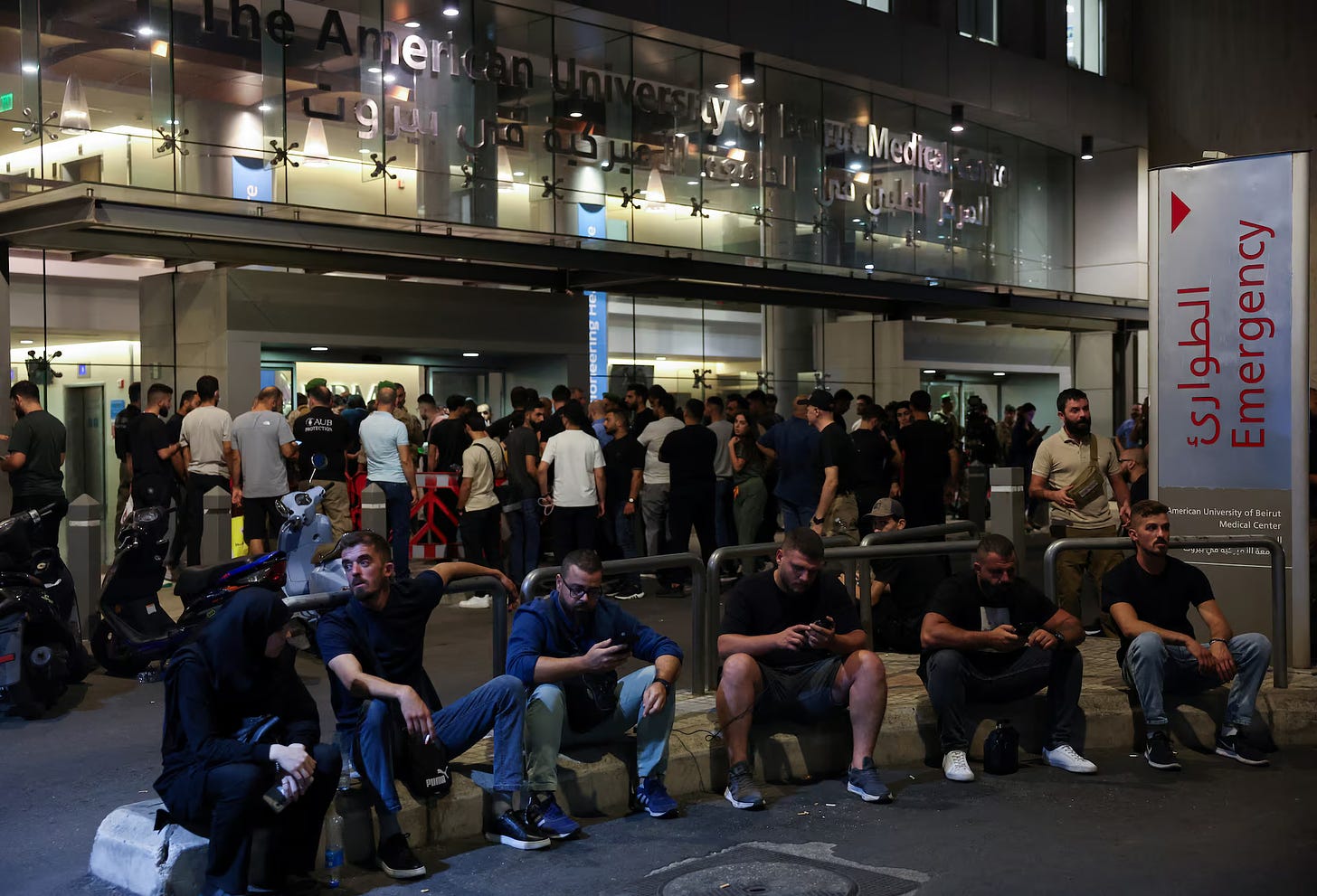
With each ludicrously diabolical move, Israel’s security and military services are proving that they will broaden the conflict ignited when Hamas breached the country’s vaunted security defences on 7 October. Notions such as ceasefire and peace are terms of nonsense and babble before the next grand push towards apocalyptic recognition.
The pager killings in Lebanon and parts of Syria on 17 September that left almost 3000 people injured and 12 dead were just another facet of this move. On 18 September, a number of walkie-talkies used by members of Hezbollah were also detonated, killing 14. (The combined death toll continues to rise.)
In keeping with the small script that always accompanies such operations, the coordinated measure to detonate thousands of deadly pagers had Mossad’s fingerprints over it, though never officially accepted as such. It featured the use of the Apollo AR924 pager, adopted by Hezbollah as a substitute for smartphone technology long compromised by Israeli surveillance.
The group had ordered 5,000 beepers made by the Taiwanese Gold Apollo manufacturer in the early spring, most likely via BAC Consulting, a Hungarian-based company licensed to use the trademark. According to a Reuters report, citing a “senior Lebanese source”, these had been modified “at the production level.” Mossad had “injected a board inside the device that has explosive material that receives a code. It’s very hard to detect it through any means. Even with a device or scanner.”
The manner of its execution stirred sighs of admiration. Here was Israel’s intelligence apparatus, caught napping on 7 October, reputationally restored. French defence expert Pierre Servent suggested that, “The series of operations conducted over the last few months marks their big comeback, with a desire for deterrence and a message: ‘we messed up but are not dead.’” A salivating Mike Dimino, former CIA analyst and plying his trade at Defense Priorities, a US-based think tank, admired the operation as one of “classic sabotage” that would have taken “months if not years” to put into play and proved to be “[i]ntelligence work at its finest.”
While admired by the security types as bloody, bold machismo, this venture remains politically stunted. However stunning a statement of power, it only promises temporary paralysis. It’s true that Hezbollah is in disarray regarding its communications, the extent of the compromise, and pondering the nightmarish logistics of it all. Its leader, Hassan Nasrallah, has every reason to feel rattled. But the pretext for an escalation, the temptation to reassert virility and strength, has been set, thereby creating the broader justification for a move into Lebanon.

The broader war, the death, and the calamity, beckons, and an excited DiMino proposes that, “If you were planning a ground incursion into Lebanon to push Hezbollah N[orth] of the Litani, this is exactly the sort of chaos you’d sow in advance.” An unnamed former Israeli official, speaking to Axios, confirmed that the modified pagers had been originally intended as a swift, opening attack “in an all-out war to try to cripple Hezbollah.” Their use on 17 September was only prompted by Israeli concerns that their operation might have been compromised.
Nasrallah, in his 19 September speech, complemented the dark mood. “Israel’s foolish Northern Command leader talks about a security zone inside Lebanese territory – we are waiting for you to enter Lebanese territory.” He also promised that the only way 120,000 Israelis evacuated from the North could return safely “is to stop the aggression on the Gaza Strip and the West Bank.”
Every resort to force, every attempt to avoid the diplomatic table, is another deadly deviation, distraction and denial. It is also an admission that Israel remains incapable of reaching an accord with the Palestinians and those who either defend or exploit their dispossession and grief.
On a granular level, the wide flung nature of the operation, while audacious in its execution, also suggests an absence of focus. The target range, in this case, was violently expansive: not merely leaders but low-level operatives and those in proximity to them. The result was to be expected: death, including two children, and broadly inflicted mutilations. In humanitarian terms, it was disastrous, demonstrating, yet again, the callousness that such a conflict entails. Bystanders at marketplaces were maimed. Doctors and other medical workers were injured. Lebanon’s hospital system was overwhelmed.
Human Rights Watch notes that international humanitarian law prohibits the use of booby-traps precisely because such devices could place civilians in harm’s way. “The use of an explosive device whose exact location could not be reliably known,” opined Lama Fakih, Middle East and North Africa Director at HRW, “would be unlawfully indiscriminate, using a means of attack that could not be directed at a specific military target and as a result would strike military targets and civilians without distinction.”

Amended Protocol II of the Convention on Certain Conventional Weapons, to which both Lebanon and Israel are parties, offers the following definition of a booby-trap: “any device or material which is designed, constructed or adapted to kill or injure, and which functions unexpectedly when a person disturbs or approaches an apparently harmless object or performs an apparently safe act.”
Quibbling over matters of international humanitarian law is never far away. Over the dead and injured in rarified air, disputatious legal eagles often appear. While the use of such devices “in the form of harmless portable objects which are specifically designed and constructed to contain explosive material” is prohibited by Article 7(2) of Amended Protocol II, the legal pedants will ask what constitutes specific design and construction. Ditto such issues as proportionality and legitimate targeting.
Jessica Peake of the University of California, Los Angeles School of Law, is mercifully free of quibbles in offering her assessment: “detonating pagers in people’s pockets without any knowledge of where those are, in that moment, is a pretty evident indiscriminate attack” and also a violation of the rule of proportionality.
The calculus of such killings and targeting enriches rather than drains the pool of blood and massacre. Its logic is not one of cessation but replication. No longer can Israel’s military prowess alone be seen as a reassurance against any retaliation and whatever form it takes. 7 October continues to cast its dispelling shadow. Deterrence through sheer technological power, far from being asserted, has been further weakened.



